#galapagos iguana
Text
Marine Iguana
#marine iguana#iguana#Galapagos iguana#ocean#iguanas#reptiblr#reptiles#reptile#video#marine biologist#there are many benefits to being a marine biologist#saltwater iguana#sea iguana#Godzilla irl#galapagos
9K notes
·
View notes
Text


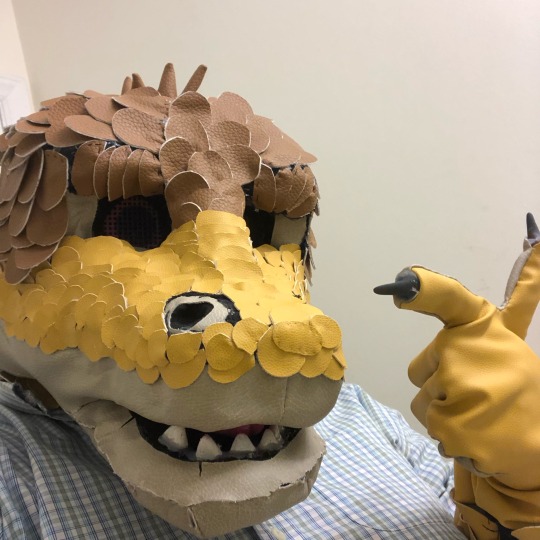

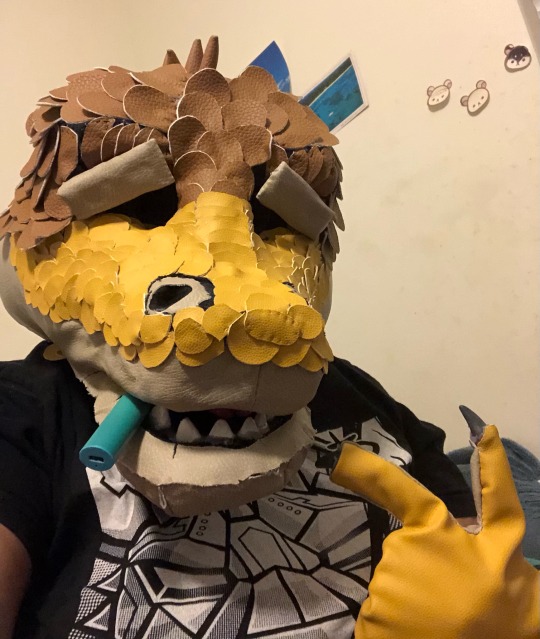
he is done
presenting Lenny the Galapagos Land Iguana, a partial ‘scale’ suit made of faux leather. He took so much time and effort, absolutely didn’t come out as nicely as I had hoped but he was very much an experimental costume.
I made this costume in the hopes of not only creating a piece to break the general conventions of how fursuits are made but also to make a character to better become more comfortable with my identity as a trans masc person. This was also the cheapest fursuit I’ve made in terms of supply costs too, thrift shops are your friend.
#art#chimericmacandcheese#furry#artists on tumblr#furry art#scalie#fursuit#fursuiting#scalie costume#scale suit#trans masc#transgender pride#nonbinary#nonbinary pride#galapagos iguana#galapagos land iguana#iguana#experimental art#experimental sculpture#trans art#halloween costume#lizard#lizard costume#trans#anthro#reptile#sculpture
28 notes
·
View notes
Text
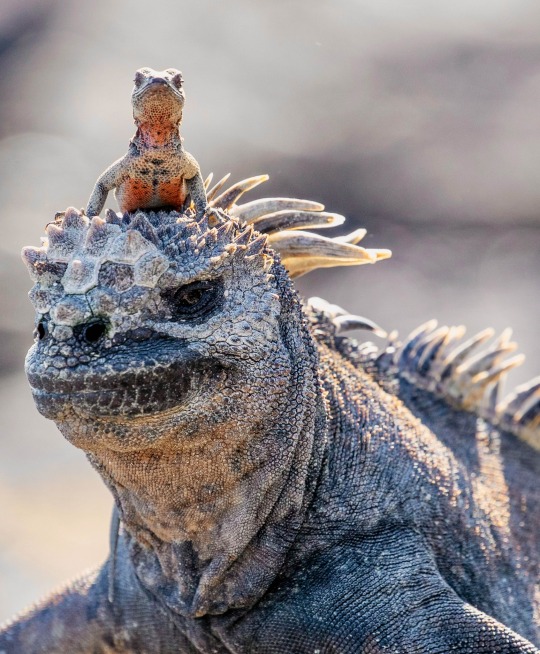

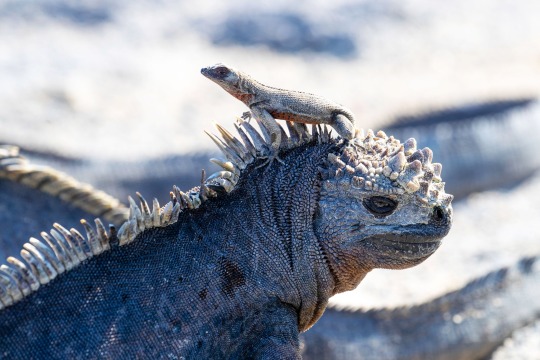
Galapagos Lava Lizard (Microlophus albemarlensis), family Tropiduridae, sitting on a Marine Iguana (Amblyrhynchus cristatus), family Iguanidae, Fernandina Island, Galapagos
photographs by Rachelle Mackintosh
#lava lizard#tropiduridae#microlophus#iguana#amblyrhynchus#iguanidae#lizard#reptile#herpetology#animals#nature#galapagos
5K notes
·
View notes
Text

Volcano Animals🦐🦈🦩🌋
#volcano#my art#flamingo#shrimp#Galapagos iguana#pacific shark#vampire ground finch#lava#animal art#ocean#Etsy#trees#rocks#drawing#painting
0 notes
Text
Baby Galapagos Pink Land Iguanas Observed for the First Time
For the first time ever baby Galapagos pink land iguanas have been observed! The critically endangered species has an estimated adult population of 200-300 animals, which researchers worried were beginning to decline due to age. A ten month search found nesting sites and hatchlings on Isabela Island, in a remote area near Wolf Volcano. Like the name suggests adult Galapagos pink land iguanas are a shade of bright pink, however, babies are bright green with black spots.
[Photo credit: Galapagos National Park]

3K notes
·
View notes
Text
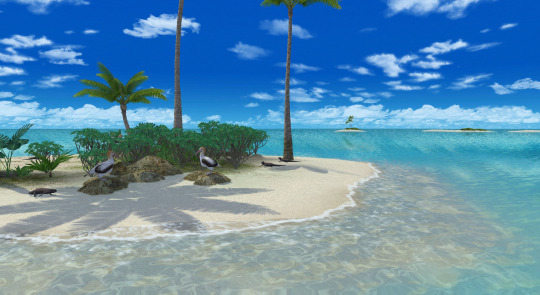
Ashore - Gatama Atoll
Endless Ocean: Blue World, Nintendo Wii
i think it would have been cute if you could see the marine iguanas walking around underwater too, since that's a thing they can do irl!
#endless ocean#endlessocean#forever blue#endless ocean 2#endless ocean blue world#forever blue 2#endlessoceanphotos#nintendo wii#wii#short tailed albatross#galapagos marine iguana#gatama atoll
250 notes
·
View notes
Text
I haven't talked reptiles in Wet Beast Wednesday in a while (and the first time I did it got like 9 notes) so I'll do it again with marine iguanas. Admittedly they're more amphibious than aquatic, but there's no Moist Beast Monday and I think they're cool so it'll have to do.
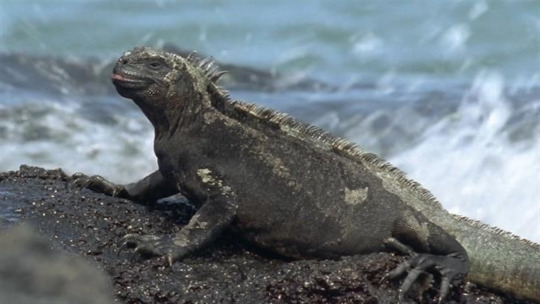
(Image: Doug Jones in The Shape of Water a marine iguana basking on a rock)
Marine iguanas (Amblyrhynchus cristatus) are large lizards native to the Galapagos Islands. They are unique for being the only extant lizards that spend time in the ocean. As of 2017, there are 11 distinct subspecies that are isolated from each other by the islands they live on. Occasionally a member of one subspecies will end up on the wrong island and produce hybrid offspring. Marine iguanas also can but very rarely do hybridize with the land iguanas of the Galapagos, with whom they are believed to share a common ancestor.
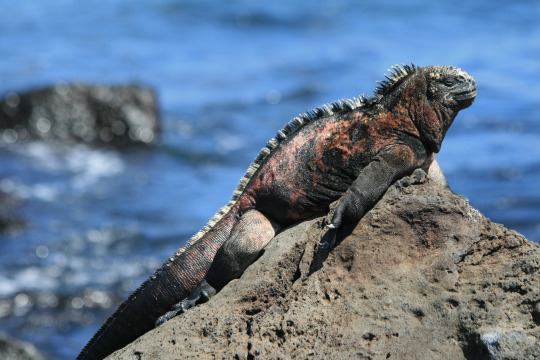
(Image: an iguana perched on a rock
Marine iguanas vary in size based on subspecies, with those from smaller islands reaching a smaller adult size. In general, they race from 12 to 56 cm (4.7 - 22 in) from snout to rear, with a tail ranging from 17 to 84 cm (6.7 - 33.1 in). Males are significantly larger than females, up to twice the weight and noticeably longer. Marine iguanas are robust, with relatively short limbs. Their leg bones are heavy, to provide ballast while swimming. Their tails are laterally flattened and provide propulsion for swimming. They have a row of spines down their backs that provide stability while swimming, similar to a fish's dorsal fin. Their feet have powerful claws and can be used to cling onto and push off of undersea rocks. Marine iguanas were noted by many explorers for their dark color, including Charles Darwin (who referred to them as "clumsy" and "disgusting"). This dark color helps them warm up quickly after diving in the sea.

(image: an iguana going for a swim)
A major feature of the marine iguana is its diet, which is a huge factor in their semiaquatic lifestyle. They feed almost exclusively on green and red algae that grown underwater. To reach the algae, females and smaller males browse the intertidal zone during low tide, while larger males and abnormally large females can swim out to the deeper subtidal zone to forage. They can spend an hour underwater one one breath and dive to 30 m (98 ft), but most dives are much shallower and shorter. Only the largest males swim offshore and dive to significant depths for their food. Because they are positively buoyant, divers must actively swim or cling onto rocks to stay underwater. Most individuals will return to the same spot for feeding and competition over feeding spots have been known to happen. Larger males that swim out for their food have the advantage of less competition for their feeding spots. The species has adapted to be able to fast or subsist on reduced for long periods. During El Nińo, where food supplies can be reduced for years, they will actually shrink, with even their bones getting shorter, then return to full size once the food supply is restored. Because they consume excess salt with their food, marine iguanas have developed the ability to filter the salt out of their blood and expel it through glands in their nostrils. The secreted salt can then be sneezed away. Juveliles spend the first few months of their life feeding on (WARNING: GROSS) the feces of older iguanas. This helps them develop the culture of symbiotic gut bacteria that helps them digest algae. In fact, their digestive systems are so specialized to algae that they can't switch diets.

(image: a marine iguana grazing on algae underwater)
As ectotherms (cold-blooded animals), marine iguanas need to keep themselves warm to survive. The water around the Galapagos is typically around 11-23 degrees C (52-75 F) while their preferred body temp is 35-39 C (95-102 F). This high preferred temperature helps with their digestion. To keep themselves warm, the iguanas spend a lot of their time basking in the sun, especially after swimming. They can also reduce their heart beats while cold to help prevent heat loss. Basking iguanas can cover large beaches. They live in colonies that usually range between 20 and 500 individuals but can sometimes get up to 1000 members. Their biomass to area ratio can be the highest of any reptile. While they are considered gregarious, they display no social behavior such a grooming. The closest they get to a group activity is sleeping next to each other to conserve heat at night. They also get along with other species, such as Darwin's finches, mockingbirds, and crabs who will pick parasites off their skin. Divers may allow cleaner fish to pick off bits of dead skin. Another lizard, the lava lizard, likes to visit colonies to hunt flies attracted to the iguanas. The iguanas allow the much smaller lizards to climb all over them. Marine iguanas often share beaches with Galapagos sea lions, who will occasionally allow the iguanas to climb over them.
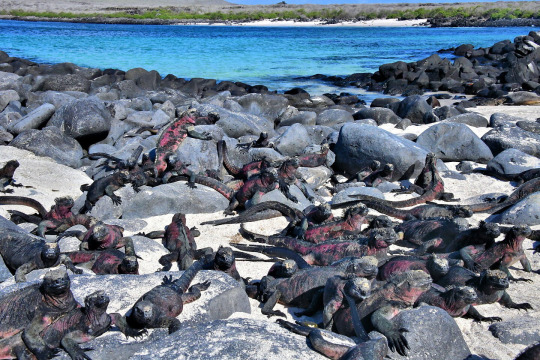
(image: a group of iguanas basking together)
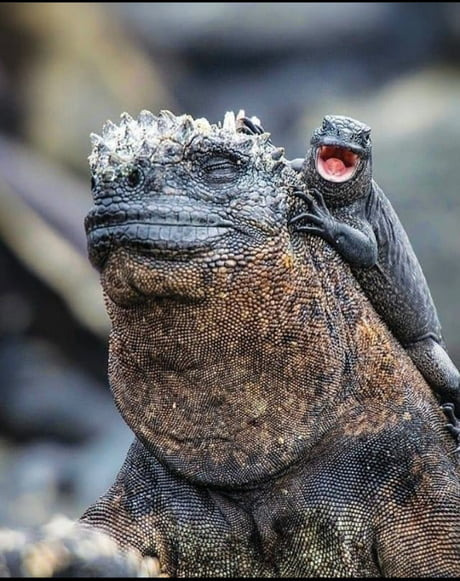
(image: a male marine iguana, identifiable by the rough scales on his head, with a lava lizard climbing on him)
During mating season, male iguanas stop being as chill with their neighbors, attempting to establish a territory and push other males out. They also change from their normal dark appearance to a much brighter coloration. Territories are usually bordered by rocks or crevasses and can be found next to each other in groups. Males will attempt to attract females to their territories while fighting other males to get access to their females. This behavior is called lekking. Females show a distinct preference for larger males and it is the largest males that are most successful at maintaining territories. Medium males are forced to patrol the edges of territories to try to pick up mates while small males often pretend to be female to sneak into another's territory and attempt to mate. Males with territories defend them with special displays where they will raise their dorsal spines and open their mouths while bobbing their heads around. If another male challenges the dominant, they will display at each other. If neither submits, a fight will start. Males fight by headbutting and trying to push each other around. These fights can last for hours and the participants will occasionally take breaks. In most cases, one will eventually display a submissive posture and retreat, though in a few cases the fight has escalated to biting and scratching. When courting a female, a male will nod at her and approach in a sideways walk. Smaller males without territories may also try mating forcibly. Females only mate once per year and will signal rejection to additional suitors by nodding at them.
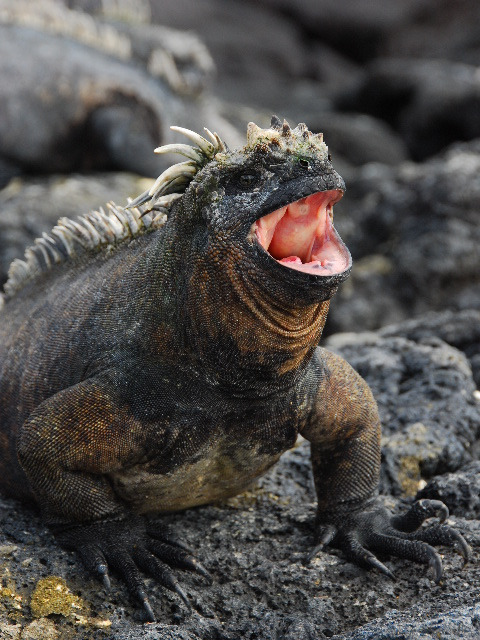
(image: a male performing a territorial display)

(image: two males headbutting each other in a territorial battle)
Mating season usually lasts between December and March. Females will lay eggs about a month after mating. The eggs (usually 2 to 3 but sometimes up to 6) can collectively weigh up to a quarter of the mother's weight, which is very large for an iguana. They are laid well above the tide line and buried in sand or soil. In places with few good nesting sites, mothers will guard their eggs after hatching to make sure other females don't dig therm up to steal the spot. When females fight over nesting spots they are less disciplined than males and will quickly resort to biting. The eggs hatch after 3-4 months. Females reach sexual maturity after 3-5 years while males do so after 6-8 years. They live an average lifespan of 12 years, but can live up to 60.

(image: a female iguana digging her nest)
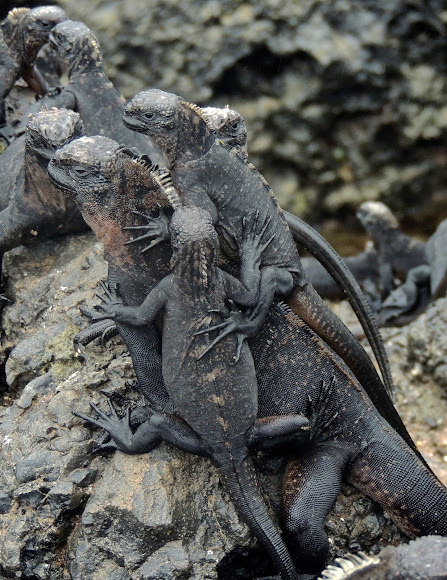
(image: a group of juveniles climbing on each other)
Marine iguanas are classified as vulnerable by the IUCN, while a few populations are instead considered endangered. A major threat to them is warming seas, which can reduce the red and green algae populations and replace them with inedible brown algae, leading to starvation. Marine iguanas only have a few predators and most of them target juveniles or small adults. As a result, the adults demonstrate island tameness, a lack of wariness to potential predators. This has left them vulnerable to predators introduced by humans, such as dogs, cats, rats, and pigs. Despite these invasive predators being present for ver 100 years, they have not developed any anti-predator defenses against them, a phenomenon called ecological naïveté. They also do not fear humans and will allow tourists to approach them, which has led to injuries and the spread of human-introduced diseases. They are protected by laws of Ecuador and most of their range is in protected areas. Efforts to remove invasive predators have seen some benefit. They are difficult to keep in captivity due to their specialized diets, and they have never been bred in captivity.

(image: a male with his bright mating season coloration)
#wet beast wednesday#marine iguana#biology#zoology#ecology#marine biology#galapagos#animal facts#iguana#lizard#reptile#long post
178 notes
·
View notes
Text

Galapagos land iguana - Galapagos Islands
By Court Whelan, Ph.D.

#court whelan ph.d.#photographer#galapagos land iguana#iguana#reptile#galapagos islands#nature#animal
77 notes
·
View notes
Text
Animal of the Day!
Galapagos Land Iguana (Conolophus subcristatus)
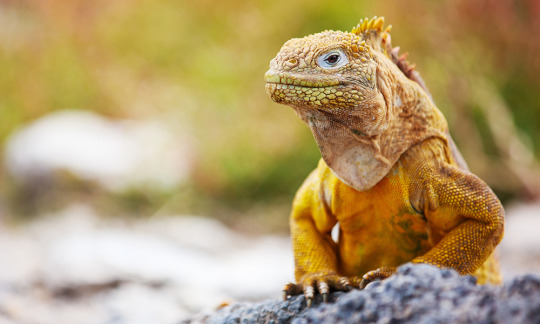
Photo from Galapagos Conservation Trust)
Conservation Status- Vulnerable
Habitat- Galapagos Islands
Size (Weight/Length)- 14 kg; 91 cm
Diet- Cacti
Cool Facts- Being one of the largest lizards in the Galapagos, the Galapagos land iguana has its pick of cactus. Prickly-pear cactus is a favorite. The iguana eats everything from the fruit and flowers to the pads and spines. Getting almost all of its water from cactus, these lizards only drink when it rarely rains. Almost going extinct in the 1950s from overhunting, mass breeding efforts have helped bring their populations to a relatively stable level. Despite there being plentiful land iguanas, some get frisky with marine iguanas and produce hybrid babies that can both swim and eat cactus.
Rating- 12/10 (Yellow lizards do be vibing.)
#Animal of the day#Animals#Reptiles#Lizards#Iguana#Friday#December 30#Galapagos land iguana#biology#science#conservation#the more you know
201 notes
·
View notes
Text
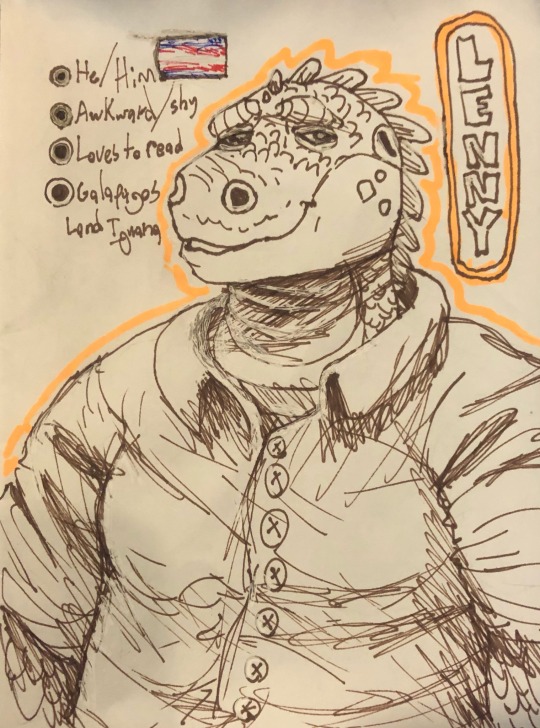
finally picked a name for my iguana character, his name is Lenny. this is a sketch i did in class please excuse the messy trans flag i dont have pink or light blue pens qwq
The partial suit for him will be done before Halloween stay tuned for the “scale”suit
#art#chimericmacandcheese#furry#artwork#artists on tumblr#anthro#drawing#furry art#fursona#anthropomorphic#doodle#scalie#traditional#traditional art#ink pen#fountain pen#galapagos iguana#galapagos land iguana#iguana#sketch#trans art#trans#trans masc#trans man#scalie art#fursuit design#fursuit concept art
27 notes
·
View notes
Text
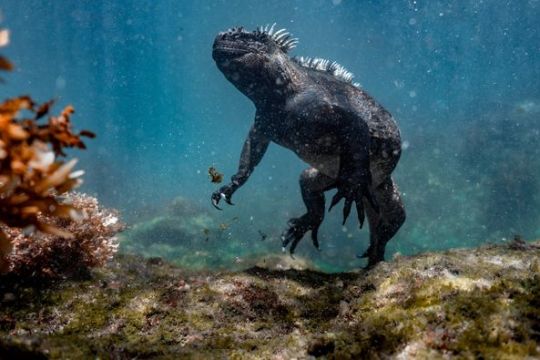
Marine Iguana (Amblyrhynchus cristatus), family Iguanidae, Galapagos Islands
The only primarily marine/saltwater lizard in the world.
photograph via: Galápagos Conservancy
#iguana#iguanidae#amblyrhynchus#lizard#reptile#herpetology#ocean#animals#nature#south america#galapagos
517 notes
·
View notes
Text


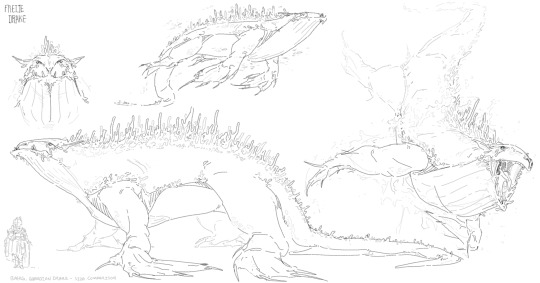
Freij
Freije
Known for their fringed ears, thick dark hair, and natural resistance the frigid temperatures of the north.
Freije seals take on a white or pale-blue hue, contrasting against their dark skin. Typically asymmetrical and unique to each individual, they have been widely (and fittingly) remarked as resembling snowflakes and frost, consisting of radial pattern of crystal-like markings.
Matriar
The military and naval prowess of Freij is recognized across Elothia, and its Matriar reflects that. As Leader and Admiral, She dons the military vestments of the region, although ornamented and embroidered to indicated Her regal station. She also carries on Her person, just as the officers under Her, a dagger and sabre. Typically these would be highly decorated commissioned works, much like Her chokha and kalpak. However the current Matriar has forgone the tradition, preferring to don and wield the standard arms of her men.
As Impero recently saw a Patris leave the throne, Freij is likely to see one on theirs in the coming centuries as the current Matriar has only one son and seemingly no interest in bearing another child.
Czars
State officials and Generals to Her Majesty. Much like the Matriar, Czars are outfitted in military garb and keep a dagger and sabre on their person. While still decorated to denote them as officers of import, it is not to the level of the Matriar.
Citizens
Despite the high tolerance to the northern climate that they have become known for, Freije are born incredibly susceptible to the cold.
Newborns are heavily swaddled in thick furs and kept indoors for the most of their first year. Even when younglings are finally able to be brought outdoors, they do so thoroughly bundled up, almost comically, in several layers of thick clothing and furs.
It's not until adolescense that the Freije's cold tolerance truly begin to build up. They begin to strip away their heavy coats, scarves and furs, and many, many, layers as the years proceed, and by their first century the typical Freije can brush off the low temperatures with far lighter apparel. To the outsider experiencing the bite of Freij's Spring chill for the first time, they may even look underdressed.
In opposition to this are the region's wealthier merchants, barons, and city officials. Setting themselves up at higher altitudes, far above the crowded docks and fish markets, even their natural resistance isn't quite enough to keep out the colder mountain winds. As a result, upper class Draken remain relatively bundled up well after maturing - a fact that's earned the ridicule of many common folk, thinking it make them look childish.
#Chronicles of Cassendenia#Matriar Lynorre Tark Freij#Johann Tark Freij#Baerg#Guardian Drake#Freije Drake#Elothian Drake#OC#CoC ref#MSPaint Draw#Next stop the Frost draken or as they shall now be known: the Freije#I lost the loving feeling i had with the gen naval officer look because it left me hung up on how to handle the citizenry#so this time around i took insp from Cossack uniforms and Ukrainian folk costumes and now we're cooking with gas#also real shit: not to sip to deeply of mine own cool-aid but#the Freije drake maybe the sickest thing i've ever designed and possibly ever will design#if it never gets better than this fucking Unit than i'll be AbSoLutely fine with that#it's like: humpback whale+walrus+galapagos iguana and i think i love it to death#the imperian i think is the easiest to draw for me but the freije - ughhh 😩💕#i always knew it had the potential to be cool as shit and i am finally a strong enough artist to make it a reality
47 notes
·
View notes
Text

A Galapagos land iguana (Conolophus subcristatus) in the Galapagos Islands
by Oleg Nabrovenkov
#galapagos land iguana#conolophus subcristatus#conolophus#iguanidae#iguania#squamata#reptilia#chordata#wildlife: galapagos islands
60 notes
·
View notes
Text

Ashore - Gatama Atoll
Endless Ocean: Blue World, Nintendo Wii
i can hear the sound effect for those marine iguanas stepping around in my mind... it never stops
#endless ocean#endlessocean#forever blue#endless ocean 2#endless ocean blue world#forever blue 2#endlessoceanphotos#nintendo wii#wii#galapagos marine iguana#gatama atoll
85 notes
·
View notes
Text
Okay I promise I’m almost done Galapagos posting I swear I’ll have it all out of my system in 24 hours! If you’re still with me please join me in appreciating the breathtaking beauty of the Galapagos land iguanas






#GalapagosFauna#Galapagos Week 2022#animals#cute#biology#wildlife#zoology#nature#herpetology#herpblr#land iguana#iguana#lizards#reptiles#cool#fauna
637 notes
·
View notes